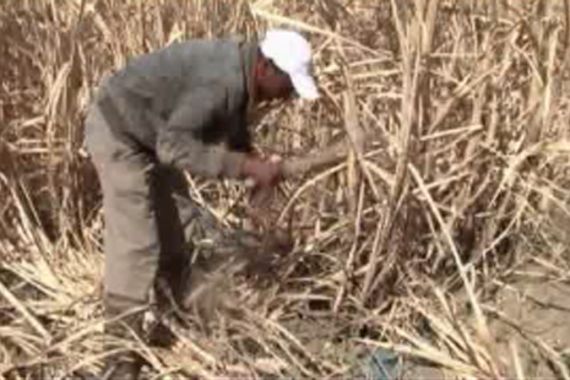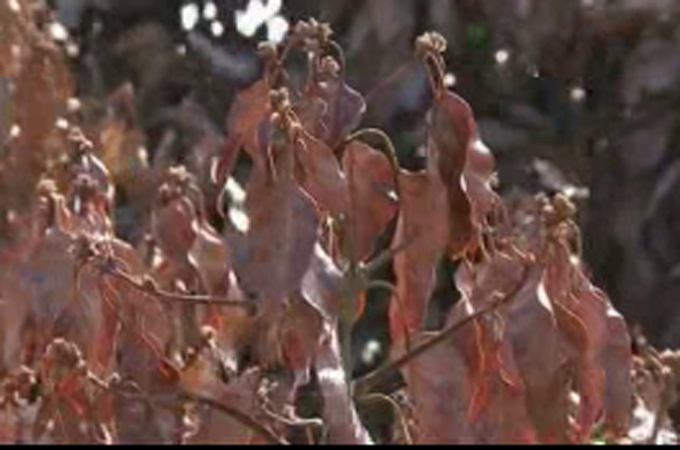Morocco’s harsh winter
Farmers despair as their crops shrivel away

 |
| Frost and drought have brought misery to Moroccan farmers, severely damaging crops. [Reuters] |
It is said to be the driest year since 2007.
The rainfall amounts in Gharb, the main agricultural region, are down by 14% from last year. But not only has this year been dry, it’s also been unusually cold.
Keep reading
list of 4 itemsAfter the Hurricane
World’s coral reefs face global bleaching crisis
Why is Germany maintaining economic ties with China?
A short cold snap isn’t unusual in winter, but this cold weather has been particularly long. In Gharb, temperatures have fallen to -4 C, with the frost lasting for nearly six weeks.
Agriculture is an important sector in the Moroccan economy and employs more people than any other sectors.
This year’s loss of crops has been disastrous for some farmers. Hardest hit have been potato crops, 80% of which have been destroyed. 70% of avocados and 50% of the bananas have also been lost to the frost. Cereal is expected to be severely hit as well, with production expected to be less than half of last year’s harvest.
In many cases, even if the fruit has survived, they have been so badly damaged that they are impossible to sell.
To minimise the loses, the government has decided to distribute new potato seeds, but some farmers, like Mansour Manassri, think there are better ways of helping the farmers:
“We were told that we will be compensated to the tune of 50 per cent. We were expecting this compensation to be in cash not in potato seeds. Because we don’t know what kind of seeds they are, we cannot plant them.”
The destruction of crops is so extensive that its effect is expected to be felt far more widely than just the farming community. The prices of many food items including fruit and vegetables is expected to rise sharply.
The situation in Morocco is a stark contrast to neighbouring countries of Algeria and Tunisia. Both of these nations have been struck by flooding in recent weeks.
In Tunisia the severe weather has left at least two people dead.
Heavy rain, combined with the runoff from recent snowfalls, have led to landslides and the inundation of several towns and villages.
Thousands of people had to take shelter in evacuation centres, and vast areas of agricultural land have been destoyed.
Habib Jomli, a senior agriculture ministry official, estimated that a total of 14,000 hectares of farmland was damaged. The worst affected region was the northwest of Tunisia, which is the most productive areas for grain cultivation in the country.
Harvest yields across Northern Africa are known to swing sharply due to cyclical droughts. This year’s combination of drought and floods have led to devastating effects.